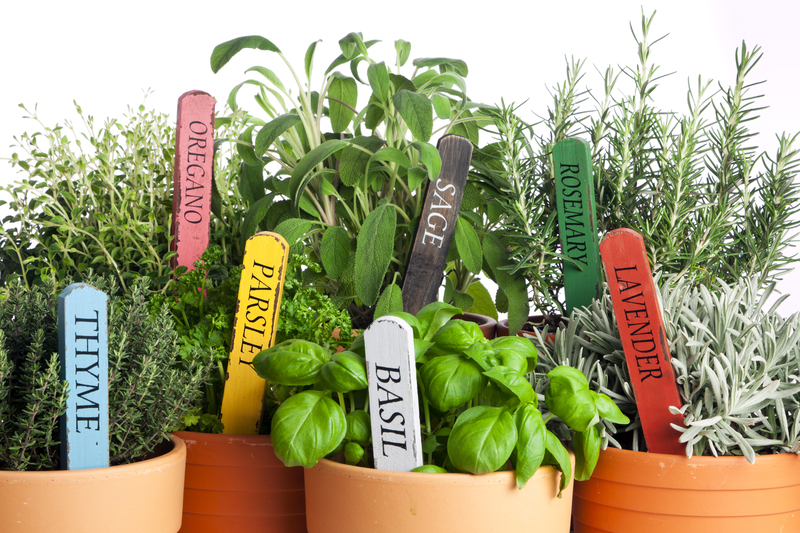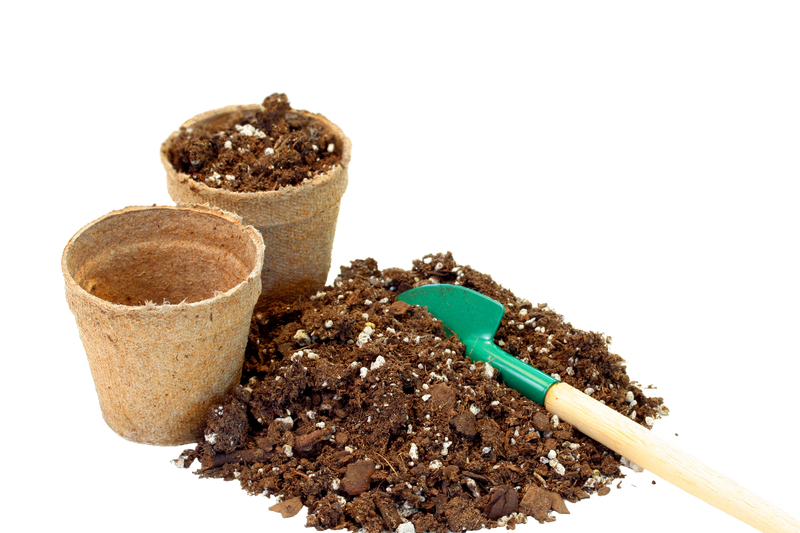The Unexpected Role of Gardening in Climate Change Relief
Posted on 26/08/2025
The Unexpected Role of Gardening in Climate Change Relief
It's no secret that tackling climate change is a global priority, at the forefront of science, policy, and public concern. Yet, one powerful ally in this urgent challenge is often overlooked: the humble garden. Gardening's role in climate change relief is more significant than most suspect. Beyond producing beautiful landscapes and fresh vegetables, gardens play an essential part in sequestering carbon, supporting biodiversity, and fostering sustainable communities. This comprehensive article explores how gardening contributes to climate change mitigation, offering unexpected benefits for the planet and actionable ideas for every gardener.

Why Gardening Matters in the Fight Against Climate Change
When we talk about combating global warming, the focus usually lands on renewable energy, electric vehicles, and large-scale forestation projects. But climate change relief through gardening is an equally vital piece of the puzzle. By transforming how we design and maintain gardens, communities worldwide can support environmental sustainability right from their own backyards.
- Carbon sequestration through healthy soil management
- Biodiversity enhancement for ecological resilience
- Reduction of urban heat islands via green spaces
- Conservation of water resources through smart gardening techniques
- Promotion of local food production to cut emissions from food transportation
Let's delve into these remarkable benefits and learn how any individual can make a difference by gardening.
1. Carbon Sequestration: How Gardens Trap Greenhouse Gases
Soil stores more carbon than the atmosphere and all the world's vegetation combined. Through photosynthesis, plants capture atmospheric carbon dioxide (CO2) and transform it into organic matter. Well-maintained gardens, particularly those rich in perennial plants, shrubs, and trees, function as mini carbon sinks, helping to offset the emissions produced by human activity.
- Perennial plants: Unlike annuals, which are replanted every year, perennials keep roots intact year-round, continuously drawing carbon into the soil.
- No-dig gardening approaches: Minimizing soil disturbance reduces the release of stored CO2 from the earth back into the atmosphere.
- Composting: Adding organic matter supports microbial life, which transforms waste into stable carbon compounds.
A recent study in Nature Sustainability found that urban gardens may sequester up to 25 metric tons of carbon per hectare annually--a major contribution when multiplied across cities and suburbs.
2. Biodiversity Boost: Gardens as Safe Havens for Species
Species loss and ecosystem collapse are among the gravest threats linked to climate change. By fostering greater plant and animal diversity, gardens enhance resilience--making natural systems more capable of withstanding environmental extremes. Gardens can be designed to:
- Support pollinators like bees, butterflies, and birds, essential for crop production and wild plant reproduction
- Provide safe spaces and food sources for beneficial insects and small mammals
- Preserve rare or native species threatened by habitat loss
A garden rich in different flowers, herbs, and shrubs not only looks appealing but also creates a vital network of lifelines for wildlife. Biodiverse gardens mitigate the effects of climate change by stabilizing food webs and reducing the spread of pests and diseases.
3. Urban Heat Island Effect and the Cooling Power of Gardens
Urban environments absorb and retain heat, creating "heat islands" that can raise city temperatures by several degrees compared to neighboring rural areas. This phenomenon intensifies energy use (like air conditioning) and worsens air pollution.
Gardens are natural coolers: The vegetation they contain shades hard surfaces, cools the air through evapotranspiration, and creates more comfortable city microclimates. Research indicates that neighborhoods with abundant green space can be up to 7?C cooler during heatwaves.
- Trees and shrubs: Large-leafed species provide deep shade and shield homes from solar radiation, reducing the urban heat island effect.
- Green roofs and vertical gardens: These innovations expand gardening's reach, transforming rooftops and walls into lush, cooling landscapes.
By integrating gardens into urban planning, communities can adapt to rising temperatures while promoting overall well-being.
4. Water Conservation, Soil Health, and Flood Prevention
Intense rainfall and drought--both symptoms of a warming planet--threaten soils and water supplies. Climate change relief via sustainable gardening includes techniques that safeguard these precious resources. Smart gardens:
- Harvest rainwater using barrels and permeable surfaces, minimizing the use of municipal water
- Build soil health through mulching, cover cropping, and compost, which boost water retention and prevent erosion
- Create rain gardens and bioswales, which help absorb floodwaters and reduce pressure on urban drainage systems
Healthy soils and resilient plantings act as natural sponges--cooling the ground, replenishing groundwater, and providing vital drought and flood resistance.
5. Local Food Production: Reducing Carbon Footprints
Food transportation, or "food miles," is a primary contributor to global greenhouse gas emissions. Gardening for climate change means growing more food locally, which cuts fossil fuel use and builds stronger food security.
- Community gardens increase access to fresh, nutritious produce and decrease reliance on imports.
- Backyard vegetable patches empower families to reduce waste and use organic methods instead of chemical inputs.
- Homegrown food translates to fewer plastic packages in landfill and fosters a deeper connection to sustainable food systems.
The movement towards edible landscapes and food forests transforms traditional lawns into carbon-absorbing, productive spaces--all while shrinking your ecological footprint.
Practical Steps for Climate-Smart Gardening
Anyone, no matter their available space or resources, can leverage gardening's impact on climate change relief. Here are actionable steps to maximize your garden's benefits for the planet:
Choose Plants Wisely
- Opt for native species adapted to your region's conditions. They support wildlife and are less water-intensive.
- Mix annuals, perennials, shrubs, and trees for a diverse, multi-level canopy that stores more carbon and cools the environment.
Practice Regenerative Gardening
- Avoid tilling and minimize digging to keep soil structure intact and retain stored carbon.
- Mulch regularly to conserve moisture, feed the soil, and control weeds naturally.
- Compost kitchen scraps and garden waste, turning them into nutrient-rich amendments.
Save Water and Prevent Runoff
- Install rain gardens and swales to manage stormwater and recharge groundwater.
- Collect rainwater and use drip irrigation systems to reduce waste.
- Plant densely to shade the soil, reduce evaporation, and boost ecosystem productivity.
Build Pollinator Gardens
- Grow a variety of flowering plants to provide nectar and pollen throughout the season.
- Avoid pesticides and use natural pest controls to protect beneficial insects.
- Create habitats such as bee hotels and log piles for overwintering pollinators.
Support Community Gardening Initiatives
- Join or start a community garden to share knowledge, resources, and harvests.
- Advocate for urban green spaces, green roofs, and food forests in your neighborhood.
- Educate others about the vital link between gardening and climate change relief.
Gardening as Climate Activism
Some may wonder: can small efforts really make a global impact? The answer is an emphatic yes. If millions of people worldwide engage in climate-friendly gardening, the cumulative effects are profound:
- Massive sequestration of carbon that would otherwise accelerate warming
- Enhanced resilience of local ecosystems and food networks
- Community empowerment and education, inspiring further positive change
In fact, many environmental organizations now recognize *gardening for climate change relief* as a core component of broader sustainability strategies. Every plot of land--every balcony, rooftop, or windowsill--represents an opportunity for meaningful advocacy and planetary repair.

Success Stories: Real-World Impacts of Climate-Smart Gardening
Urban Farming in Detroit
Detroit's vacant lots have been transformed into productive urban farms. These projects not only sequester significant amounts of CO2 but also provide fresh food, reduce city heat, and revive neighborhoods. Urban gardening's role in climate change relief in Detroit serves as a model for cities worldwide.
Community Gardens in London
London's community gardening programs encourage densely populated neighborhoods to convert lawns and abandoned sites into communal veggie patches. Participants report measurable reductions in food miles and tangible improvements in mental health and biodiversity.
Rain Gardens in New York City
NYC has installed more than 10,000 rain gardens to manage stormwater and reduce urban flooding. These vegetated areas not only prevent pollution from reaching waterways but also provide vital habitats and shade, highlighting the significance of gardens in climate change adaptation.
Conclusion: Cultivating Hope for the Planet
Gardens are more than ornamental retreats; they are a powerful force for climate change relief. By adopting eco-friendly practices, supporting biodiversity, and advocating for green spaces, everyday gardeners can play a central role in healing the planet. Moreover, gardening's unexpected benefits for climate stability empower communities, create resilient food systems, and deliver environmental justice in cities and rural areas alike.
In a world facing unprecedented environmental challenges, every seed sown is an act of hope and resistance. Whether you have acres or a windowsill, your garden is a vital part of the global effort to mitigate and adapt to climate change. So, dig in, plant wisely, and join this quiet, green revolution--one garden at a time.

